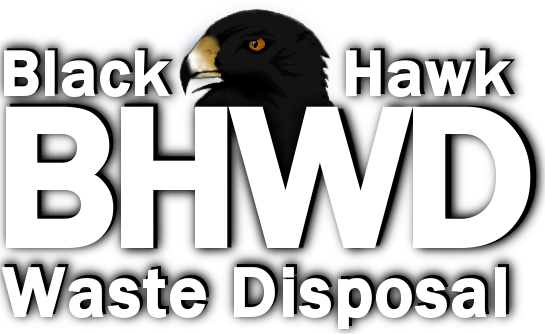General Information
Prior to construction, ensure compliance with all city and state building codes.
For best practice and to avoid damage to the enclosure, it is best to keep grease trap storage containers and solid waste/recycling containers in separate enclosures.
Clearance
- Our drivers must pull the container out of the enclosure before servicing your dumpster. Ensure they have room to back the truck up without blocking traffic. A garbage truck needs at least 20’ of overhead clearance and 60’ of ground clearance in front of the enclosure.
Flooring
- The container must rest on a flat level concrete surface, lightly slopped by 5 degrees to facilitate drainage. If the floor is not properly level, the dumpster may roll into the gate or walls and damage the enclosure.
- To avoid cracking, dips, and other damage, the concrete pad or flooring must be engineered to withstand up to 20,000 lbs. Usually a minimum of 6 inches thick with steel reinforced concrete.
Doors/Gates
- Hinged gates that swing outward or sliding gates that move side to side are preferred.
- The enclosure entrance must lead to the driveway and may not open onto sidewalks, parking spaces, handicap safety zones or public right of way.
- Gates must be at least 2” off the ground and be of sufficient size and quantity so it is not necessary to remove one dumpster to service a second dumpster.
- The dumpster must be able to be pulled out freely with no bumps, dips, metal strips, slopes, snow, debris, or other obstructions.
- When using sliding gates, the guide cannot sit on the concrete pad, as it will prevent the dumpster from rolling over it.
- Any gate that is 12’ or wider should have a wheel on the end farthest from the hinges. As the enclosure ages without a wheel on the end, the weight of the gate will pull down on the top most hinge and cause damage, causing the enclosure gate to droop and not shut properly.
- To ensure the vehicle can access the dumpster, and the driver has room to get in and out of the vehicle and enclosure it is best practice for gates to open at least 120 degrees.
- The opening dimensions must be clear of gate edges, hinges, and other obstructions with a minimum width of 12’.
- One Dumpster – The minimum width for the gate of the enclosure must be at least 12’.
- Two Dumpsters – If you are building an enclosure to support two dumpsters, the gate width should be at least 20’ to allow bringing each container out from the enclosure without causing damage or two 12’ gates can be utilized, being sure there is 12’ space on each side of the center post.
Gate Pins and stops
- A proper enclosure will usually have multiple holes in the concrete for pins that hold the gates both shut and open.
- Gate pin holes must be kept free of debris and ice, especially during winter.
- Installing gate stops and pin holes prevent accidental gate swinging which cause damage to vehicles, property and persons.
Walls
- The best materials for enclosure walls are usually masonry or wood. Chain link fencing is not generally a good deterrent for illegal dumping or aesthetics.
- The recommended wall height is a minimum of 6’ tall for trash containers, and 8’ for compactors.
- The minimum enclosure depth is 10’.
- The minimum enclosure width is 12’, but can be longer to accommodate more containers.
- Enclosures must contain bollards or interior curb bumpers along the back wall to prevent damage when the container is returned to the enclosure.
- The curb bumper must be high enough to stop the dumpster, not just the wheels.
